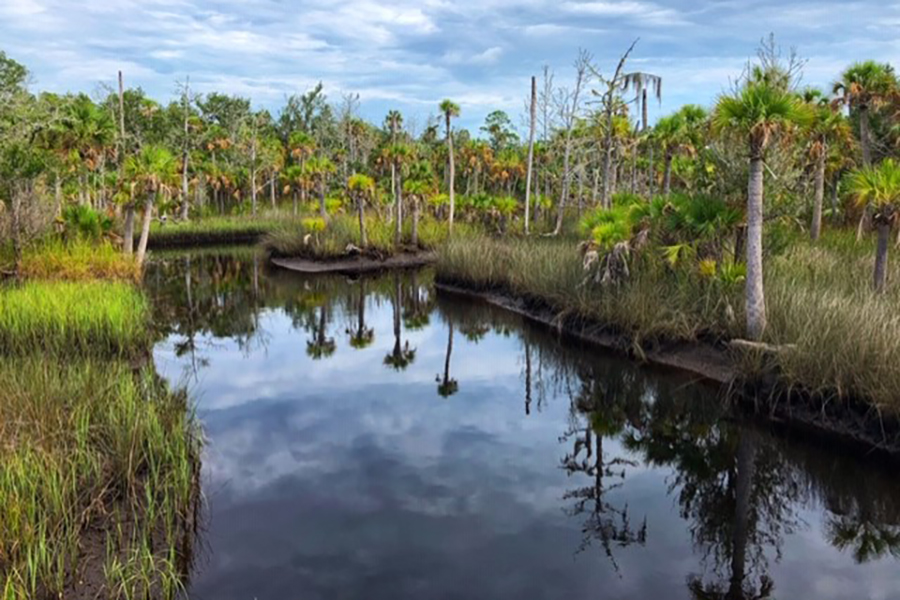
For the first time in 13 years, officials at St. Marks National Wildlife Refuge are updating their comprehensive plan. Once completed, the plan will serve as a blueprint for preserving the refuge while accommodating the 250,000 visitors it attracts annually.
As they tackle this dual challenge of tourism and conservation, officials at St. Marks are looking to Florida State University planning students for help.
At more than 80,000 acres the refuge is bigger than Orlando. It boasts 43 miles of shoreline and a milieu of coastal marshes, tidal creeks, estuaries, islands and a diverse collection of animal and plant life, including alligators and more than 300 species of migratory birds. It’s also known for its iconic, 19th–century lighthouse, the second oldest in Florida.
Conserving all this while simultaneously sharing it with a quarter million tourists, is a complex challenge said Assistant Professor Tisha Holmes, of the Department of Urban and Regional Planning from the College of Social Sciences and Public Policy.
Along with 14 students from her Coastal Planning class, Holmes is working to address complicated and competing interests.
“We have a lot of conflicts of use on the coast like development, oil exploration, recreation, tourism, sensitive ecological areas, coral reefs. It’s all happening in the same place here,” Holmes said. “So how do you balance all that when the thing about the refuge is you can’t expand infrastructure. You have to find a way to work within the existing footprint and find low-impact alternatives.”
Holmes said her students have zeroed in on two particular points of focus: traffic and facilities.
“The primary goal is to protect the habitat,” she said. “But in talking with rangers they helped identify a couple things. There’s the question of opening up more roads into the refuge when they have special events like festivals, but then there’s trash and restroom facilities to support the human traffic. You can see how these are competing factors.” Robin Will, supervisor of visitor services at the refuge, said the help from Holmes’ class is appreciated and necessary.
“We are understaffed with so many big goals and objectives, but we are fortunate to have this partnership,” she said. “Being a coastal refuge, we have 49 miles along the Gulf Coast but even just a picnic area is a big impact for us.”
The connection between the refuge and the university was made by FSU’s branch of Sustainable Campus, an outreach group that seeks to pair students, faculty and staff with efforts to promote resource conservation at FSU and in the community.
Laurelin Haas, a coordinator for Sustainable Campus, said the refuge and Holmes’ class was a natural fit.
“This is a great opportunity that gives students professional development and networking opportunities in class,” she said. “We are trying to integrate sustainability into the academic culture of FSU. This partnership is a perfect example of that.”
For her part, Will said she agrees.
“The students are analyzing our objectives for visitor services in the refuge and, so far, we’re really excited by what we’ve seen,” she said. “Just to have this collaboration is very exciting, and we believe this just is the beginning of an amazing partnership.”
For more information on FSU’s Department of Urban and Regional Planning, visit https://coss.fsu.edu/durp/.




